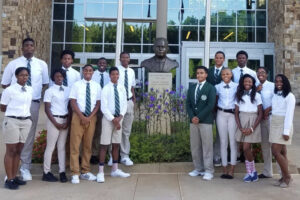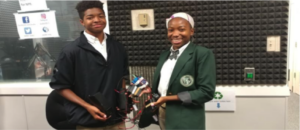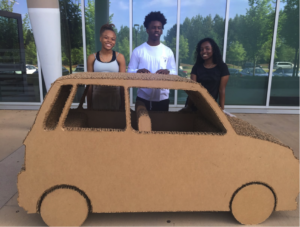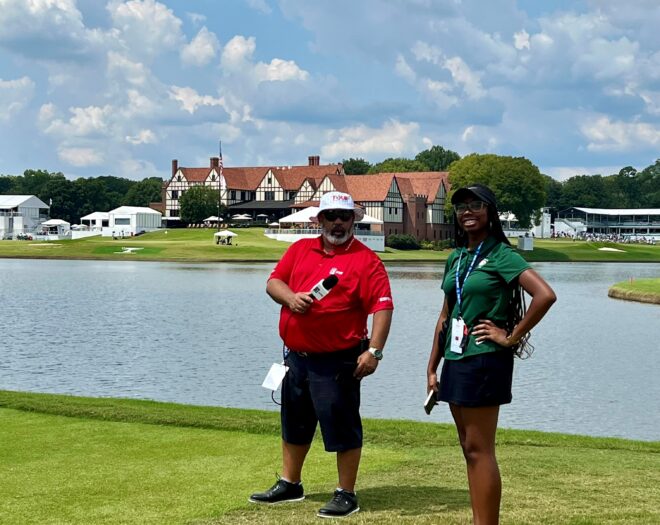The Drew Charter School InvenTeam has gained quite the reputation in the community. They’re smart, forward thinking, and incredibly motivated. Local news affiliate Fox 5 and the Atlanta Journal Constitution have featured their story of engineering and entrepreneurship.
“It’s cool when we’re on the news stations,” said InvenTeam member and Drew senior Naomi Rays. “It keeps us motivated as more stories come out.”

In 2016, a small group of three students, including Naomi, came together and applied to the Lemelson-MIT program for young inventors. The program awards grants to 15 student teams to solve a community problem. After the Drew team made it to the second round of the application process, more Drew students joined and submitted their application to create a robotic crossing guard.
“We made a list of possible problems in the community such as burglaries and crossing the street,” said InvenTeam member Noah Holloway. “A few kids had gotten hit at a specific crosswalk near school.”
“MIT actually thought that would be too big of a challenge,” Naomi added.
The team then became inspired by the death of young Cooper Harris and the ongoing trial of his father Justin Ross Harris. Cooper was left in his rear-facing car seat on a hot summer day in Vinings and died. The Atlanta news coverage of the tragic incident inspired the Drew students to come up with a new invention, something the team is tentatively calling the “baby saver.”
“Our device will mitigate the number of hot car deaths of children and pets” says the team’s mission statement. “We will investigate and test a variety of technologies to integrate into a simple, reliable device with a three-tiered alert system. First, a text alarm will be sent, next, a voice alarm for individuals in the vicinity will be activated, and finally a GPS location of the vehicle will be sent to authorities notifying them of the emergency.”

The team worked hard throughout the 2016-2017 school year to create the “baby saver,” relying on a dedicated class featuring visits from software engineers, electrical engineers and marketing professionals who prepared the students for their presentation of the device to the judges at MIT.
“The most challenging part of the processes was every week, things kept breaking,” said Noah. “It was really difficult to put the sensors together. We used maybe 1,000 code combinations to program it correctly.”
Now, the device works! The team has reduced its members due to graduation and the lack of a dedicated class, but the work hasn’t stopped. The team has submitted a patent application to a non-profit who helps advise young inventors through the U.S. patent application process. The team continues to test the device and will send electrical drawings to a microchip fabrication company to make the device smaller and permanent within a car.
“We spoke to Mercedes and Porsche, and we want to incorporate it into their vehicles,” said Naomi. “Instead of making it as a stand-along product for each car, we want to give it to the companies and they put it in the cars so the consumer doesn’t have to think about it.”

With the determination and savviness of a small group of students, you could purchase a vehicle with the “baby saver” in the next few years. But, in that time the students of the Drew InvenTeam may move on to other careers.
“I was thinking about engineering, but I’m not sure yet,” said Noah. “I want to see what’s most interesting.”
“I’m interested in environmental engineering but also interested in law,” said Naomi. “I might be environmental attorney but also plan to take engineering classes in college.”
Whether the students go on to make more life-saving inventions or save the environment, this group of Drew Charter School students will be the next generation of leaders.




